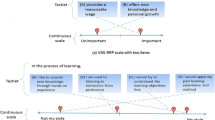Abstract
We present a rating method that, given information on the pairwise comparisons of n items, minimizes the number of inconsistencies in the ranking of those items. Our Minimum Violations Ranking (MVR) Method uses a binary linear integer program (BILP) to do this. We prove conditions when the relaxed LP will give an optimal solution to the original BILP. In addition, the LP solution gives information about ties and sensitivities in the ranking. Lastly, our MVR method makes use of bounding and constraint relaxation techniques to produce a fast algorithm for the linear ordering problem, solving an instance with about one thousand items in less than 10 minutes.
Similar content being viewed by others
References
Ali I, Cook WD, Kress M (1986) On the minimum violations ranking of a tournament. Manag Sci 32(6):660–672
Cassady CR, Maillart LM, Salman S (2005) Ranking sports teams: a customizable quadratic assignment approach. Interfaces 35(6):497–510
Coleman BJ (2005) Minimizing game score violations in college football rankings. Interfaces 35(6):483–496
Colley WN (2002) Colley’s bias free college football ranking method: the colley matrix explained
Kemeny JG (1959) Mathematics without numbers. Daedalus 88(4):577–591
Kolen AWJ, Lenstra JK (1995) Combinatorics in operations research. In: Handbook of combinatorics, pp 1875–1910
Massey K (1997) Statistical models applied to the rating of sports teams. Bachelor’s thesis, Bluefield College
Newman A, Vempala S (2001) Fences are futile: on relaxations for the linear ordering problem. Lect Notes Comput Sci 2081:333–347
Park J (2005) On minimum violations ranking in paired comparisons. arXiv:physics/0510242
Reinelt G (1985) The linear ordering problem: algorithms and applications. Heldermann, Berlin
Reinelt G, Grötschel M, Jünger M (1983) Optimal triangulation of large real world input-output matrices. Stat Pap 25(1):261–295
Reinelt G, Grötschel M, Jünger M (1984) A cutting plane algorithm for the linear ordering problem. Oper Res 32(6):1195–1220
Reinelt G, Grötschel M, Jünger M (1985) Facets of the linear ordering polytope. Math Program 33:43–60
Author information
Authors and Affiliations
Corresponding author
Additional information
This research was supported in part by NSF grant CAREER-CCF-0546622.
Rights and permissions
About this article
Cite this article
Pedings, K.E., Langville, A.N. & Yamamoto, Y. A minimum violations ranking method. Optim Eng 13, 349–370 (2012). https://doi.org/10.1007/s11081-011-9135-5
Received:
Accepted:
Published:
Issue Date:
DOI: https://doi.org/10.1007/s11081-011-9135-5




